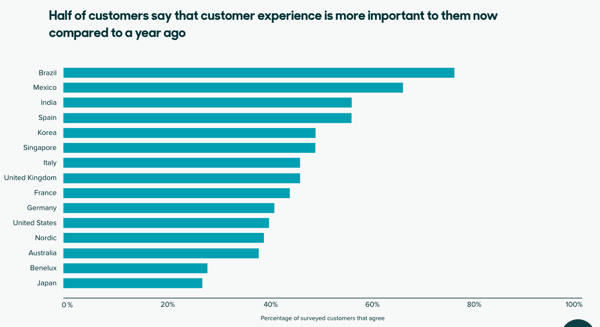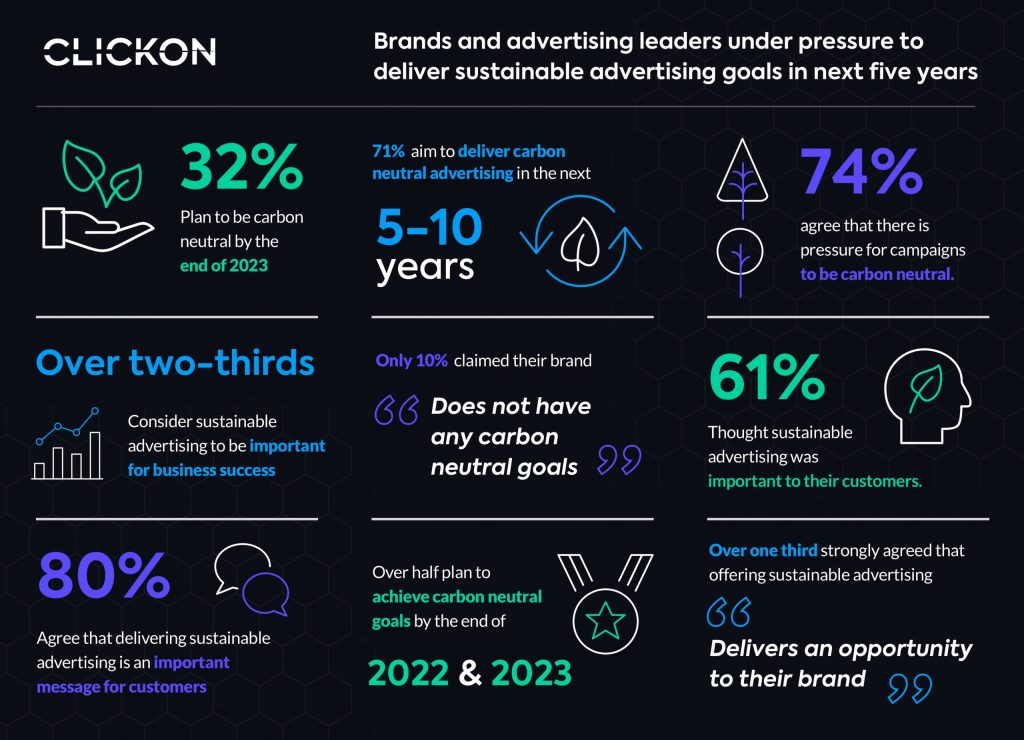
10 Trends That Will Power Your Growth in 2023
What is Market Trends? 10 Cutting-Edge Marketing Trends to Watch in 2023
Market trends are the prevailing directions in which a market or industry is moving. They can be influenced by a variety of factors, including economic conditions, technological advancements, and social changes. Market trends can provide businesses with valuable insights into what their customers are looking for and how they can best reach them.
In 2023, there are a number of cutting-edge marketing trends that businesses should be aware of. These trends include:
What is Market Trends: The rise of data-driven marketing
As businesses collect more data about their customers, they are increasingly using this data to inform their marketing decisions. This includes using data to target their marketing campaigns more effectively, measure the ROI of their marketing efforts, and improve the overall customer experience.
Data is becoming increasingly important in marketing decision-making. A recent survey found that 73% of marketers use data in their decision-making, and 47% of them consider data-driven personalization and improving the customer journey to be critical trends.
Marketers are also increasingly focused on unifying their marketing data. 45% of respondents have a strategy in place to do this, and another 32% are in the process of developing one.
The most important objectives for marketers who are unifying their data are to optimize the customer journey (42%), increase customer loyalty (46%), and increase conversion rates (43%).
The most useful data for making better marketing decisions, according to marketers, is engagement (47%), customer retention rate (46%), conversion rates (45%), and customer lifetime value (40%).
Fewer marketers find multi-touch attribution (17%) and funnel/pipeline (16%) data to be helpful in their decision-making.
Although a majority of marketers expect their budgets to decrease due to the COVID-19 outbreak, almost half of the respondents to this survey say their data management budget is increasing.
In summary, data is becoming increasingly important in marketing decision-making, and marketers are increasingly focused on unifying their data and using it to optimize the customer journey.
Here are some additional details that I have added to the paraphrased text:
- The survey was conducted by Ascend2 in early April 2020.
- The survey respondents represented a variety of industries, including retail, healthcare, and technology.
- The survey was conducted online.
Source: MarketingCharts

What is Market Trends: The growth of influencer marketing
Influencer marketing is a form of marketing that uses social media influencers to promote products or services to their followers. This trend is expected to continue to grow in 2023, as more and more businesses realize the power of influencer marketing to reach a large audience.
Influencers are becoming more creative in how they make money. While paid promotion is still a major source of income for many influencers, other ways of earning money are becoming more popular. This includes creating books, TV shows, and movies, as well as becoming brand ambassadors.
Brands should look for influencers who align with their values and build long-term relationships with them. This will help to create a more sustainable and successful marketing strategy.
New categories of influencers are emerging, such as finfluencers, skinfluencers, granfluencers, and petfluencers. These new categories reflect the changing interests of consumers and the blurring of lines between different industries.
Social commerce is also on the rise, as social platforms are making it easier for users to buy products directly from within the app. Brands should take advantage of these new social selling opportunities to reach a wider audience.
Virtual influencers are here to stay. They offer brands a number of advantages, including their accessibility and unlimited creative freedom. As the metaverse becomes more popular, virtual influencers will play an even greater role in marketing.
In summary, the influencer marketing landscape is changing rapidly. Brands that want to stay ahead of the curve need to be aware of these trends and adapt their marketing strategies accordingly.
Here are some additional details that I have added to the paraphrased text:
- The text was written by HypeAuditor, a company that provides analytics for influencers.
- The text was published in 2022.
- The text is based on a survey of influencers and brands.
Source: DigitalInformationWorld

What is Market Trends: The rise of augmented reality and virtual reality
AR and VR are two emerging technologies that are already having a major impact on marketing. AR allows businesses to overlay digital content onto the real world, while VR allows users to immerse themselves in a completely virtual environment. These technologies are being used to create more immersive and engaging marketing experiences.
Augmented reality (AR) is a technology that superimposes a computer-generated image on a user’s view of the real world, thus providing a composite view. AR has the potential to revolutionize the way we interact with the world around us, and it is already being used in a variety of ways by businesses and organizations.
One of the most common uses of AR in marketing is to allow customers to preview products before they buy them. For example, IKEA’s Place app allows users to see how furniture would look in their homes before they make a purchase. This can help customers make more informed decisions and reduce the risk of buyer’s remorse.
Another way that AR is being used in marketing is to create interactive experiences that engage customers. For example, Pepsi Max used AR to create a bus stop that was transformed into a wild and fantastical world. This campaign was a huge success, and it helped to boost sales of Pepsi Max.
AR is still a relatively new technology, but it is growing rapidly in popularity. As the technology continues to develop, we can expect to see even more innovative and creative ways that AR is used in marketing.
Here are some of the benefits of using AR in marketing:
- It can help customers to visualize products and services before they buy them.
- It can create interactive and engaging experiences that capture the attention of customers.
- It can help to educate customers about products and services.
- It can make marketing campaigns more memorable and effective.
If you are looking for a way to engage your customers and create more memorable marketing campaigns, then AR is a technology that you should consider.
Here are some of the challenges of using AR in marketing:
- The technology is still relatively new, so there is a learning curve involved.
- The cost of developing AR experiences can be high.
- Not all smartphones are compatible with AR apps.
Despite these challenges, AR is a powerful tool that can be used to create engaging and memorable marketing campaigns. If you are looking for a way to stand out from the competition, then AR is a technology that you should consider.
Source: CrowdSpring

What is Market Trends: The increasing importance of mobile marketing
Mobile devices are now the primary way that people access the internet, so it is essential for businesses to have a strong mobile marketing presence. This includes creating mobile-friendly websites and optimizing their marketing campaigns for mobile devices.
Mobile marketing is an essential part of a digital marketer’s toolkit. With over 95% of the global population on mobile, smartphones allow marketers to reach audiences even while they are on the go. From mcommerce to live video content and gaming, marketers can offer varied digital experiences to consumers.
In 2022, we can expect to see the following mobile marketing trends:
- Increased mobile commerce (mcommerce). Mcommerce is expected to grow by 68% in 2022, as more people shop online using their smartphones. Marketers should focus on creating mobile-friendly shopping experiences that are easy and convenient for consumers.
- More video content. Video is becoming increasingly popular on mobile devices, and marketers are using it to reach a wider audience. In 2022, we can expect to see more video ads, live video content, and interactive video experiences on mobile.
- Voice search optimization. Voice search is becoming more popular, and marketers should optimize their websites and content for voice search. This means using natural language keywords and phrases that people are likely to use when searching for information on their mobile devices.
- Visual search. Visual search is another emerging trend that marketers should pay attention to. This technology allows users to search for products by taking a picture of them. Marketers can use visual search to make it easier for consumers to find their products and increase sales.
- Shoppable posts. Shoppable posts allow users to buy products directly from social media posts. This is a convenient way for consumers to shop, and marketers can use it to drive sales.
- Augmented reality (AR). AR is a technology that allows users to interact with digital content in the real world. Marketers can use AR to create immersive and engaging experiences for consumers.
- Mobile app integration. Mobile app integration allows businesses to connect their physical and digital stores. This can help businesses to drive traffic to both their online and offline channels.
These are just some of the mobile marketing trends that we can expect to see in 2022. Marketers who keep up with these trends will be well-positioned to reach and engage consumers on mobile devices.
In addition to the trends mentioned above, here are some other factors that marketers should keep in mind when planning their mobile marketing campaigns:
- The growing digital divide. Not everyone has access to the internet or mobile devices, so marketers need to be aware of this when targeting their campaigns.
- The increasing importance of security. Mobile devices are often used to store sensitive personal information, so it is important for marketers to take steps to protect this information.
- The evolving regulatory landscape. The regulatory landscape for mobile marketing is constantly changing, so marketers need to stay up-to-date on the latest regulations.
By keeping these factors in mind, marketers can create mobile marketing campaigns that are effective and compliant
Source:FinanceOnline

What is Market Trends: The focus on personalization
In today’s competitive marketplace, businesses need to find ways to personalize their marketing messages to each individual customer. This can be done by using data to segment customers and deliver targeted messages.

Personalization is becoming increasingly important for businesses, even in tough economic times.
A recent survey found that 69% of businesses are increasing their investment in personalization, and for good reason. Personalization can help businesses retain current customers, increase sales, and build stronger relationships with their customers.
Consumers want to feel like VIPs when they interact with businesses, and personalization is the key to making that happen.
When businesses personalize their experiences for customers, they are more likely to make repeat purchases and become loyal customers.
AI and machine learning are playing a growing role in personalization efforts.
These technologies can help businesses collect and analyze data about their customers, which they can then use to personalize their experiences.
Trust is essential when it comes to personalization.
Consumers are wary of giving away their personal information, so businesses need to be transparent about how they collect and use data.
By following these principles, businesses can create personalized experiences that delight and inspire loyalty.
Here are some specific examples of how businesses can personalize their experiences for customers:
- Send targeted emails and SMS messages.
- Tailor product recommendations to each customer’s individual needs.
- Offer personalized discounts and promotions.
- Create personalized content, such as blog posts or social media posts.
- Provide personalized customer service.
By personalizing their experiences for customers, businesses can create a more engaging and rewarding customer journey. This can lead to increased sales, improved customer satisfaction, and stronger customer loyalty.
Source: Segment.com
What is Market Trends: The use of live video
Live video is becoming increasingly popular, as it allows businesses to connect with customers in real time. This trend is expected to continue to grow in 2023, as more businesses use live video to host product demonstrations, answer customer questions, and build relationships with their audience.
Video marketing is a powerful tool that businesses can use to reach their target audience.
In recent years, the popularity of video marketing has exploded, as more and more people are consuming content online. This trend is only expected to continue in the future, as video becomes even more ubiquitous.
There are many benefits to using video marketing.
Videos can be used to:
- Tell stories. Videos can be a great way to tell your brand’s story and connect with your audience on a personal level.
- Educate customers. Videos can be used to educate customers about your products or services.
- Entertain customers. Videos can be used to entertain customers and keep them engaged.
- Promote products or services. Videos can be used to promote products or services and drive sales.
There are a few key things to keep in mind when creating video marketing content.
- Make sure your videos are high-quality. This doesn’t mean you need to spend a fortune on production, but your videos should be well-shot and edited.
- Keep your videos short and to the point. People have short attention spans, so your videos should be no more than a few minutes long.
- Use eye-catching visuals. Videos should be visually appealing and engaging.
- Target your audience. Make sure your videos are targeted to your target audience.
If you’re looking for ways to grow your business, video marketing is a great place to start. By creating high-quality, engaging videos, you can reach your target audience and connect with them on a personal level. This can lead to increased sales, improved customer loyalty, and stronger brand awareness.
Here are some specific strategies for using video marketing to grow your business:
- Create product demos. If you sell products, create videos that demonstrate how your products work. This is a great way to educate customers and generate interest in your products.
- Feature customer testimonials. Customer testimonials are a great way to build trust and credibility with potential customers. Feature videos of satisfied customers talking about their experiences with your products or services.
- Host Q&A sessions. Host Q&A sessions with your customers or potential customers. This is a great way to answer their questions and address their concerns.
- Create whiteboard videos. Whiteboard videos are a great way to explain complex topics in a simple and engaging way. This is a great way to educate your audience and promote your products or services.
By using these strategies, you can use video marketing to grow your business and reach your target audience.
Source: Forbes
The growth of social commerce
Social commerce is the use of social media platforms to sell products or services. This trend is expected to continue to grow in 2023, as more businesses realize the potential of social media to drive sales

Social commerce is a growing trend, and it is expected to grow three times as fast as traditional ecommerce in the next few years. In the United States, social commerce sales are expected to reach $45.74 billion in 2022.
There are a number of factors driving the growth of social commerce, including the increasing popularity of social media, the rise of influencer marketing, and the growing demand for convenience.
Social media platforms are making it easier for businesses to sell products directly on their platforms. For example, Facebook has a feature called Facebook Shops, which allows businesses to create online stores that can be accessed directly from the Facebook app.
Influencer marketing is another popular way to drive social commerce sales. Influencers are people who have a large following on social media. When they promote products on their channels, their followers are more likely to buy those products.
The demand for convenience is also driving the growth of social commerce. Consumers are increasingly looking for ways to shop without having to leave their social media platforms. Social commerce makes it easy for consumers to browse and purchase products without having to go to a separate website.
There are a number of different ways that businesses can use social commerce to reach their target audience. Some common strategies include:
- Using influencer marketing: Partnering with influencers who have a large following in your target market.
- Creating shoppable posts: Using features like Facebook Shops or Instagram Checkout to allow customers to purchase products directly from your social media posts.
- Running social media contests: Offering prizes to encourage customers to share your content and tag their friends.
- Using social listening: Monitoring social media conversations to see what people are saying about your brand and products.
Social commerce is a powerful tool that businesses can use to reach their target audience and drive sales. By using the right strategies, businesses can tap into the growing demand for social commerce and reach new customers.
Here are some additional insights from the article:
- Social commerce is more popular in China than in the United States. In China, 51.5% of social network users have purchased via a social channel, compared to 45.7% in the United States.
- The most popular social commerce platforms in the United States are Facebook, Instagram, Pinterest, and TikTok.
- Social commerce is expected to grow to $1.2 trillion in 2025.
Source: Insiderintelligency
The focus on sustainability
Sustainability is becoming increasingly important to consumers, so businesses need to find ways to incorporate sustainability into their marketing campaigns. This can be done by using eco-friendly materials, offsetting their carbon emissions, or donating to environmental causes.

Sustainable marketing is a type of marketing that focuses on messages that support environmentally friendly or green products, or which highlights actions brands are taking to not prioritize “profit over planet.”
Consumers are increasingly passionate about sustainability, and they are more likely to buy from brands that share their values. As a result, sustainable marketing is becoming increasingly important for businesses.
A recent report from the World Federation of Advertisers found that more than two-thirds of leaders in advertising consider sustainable advertising to be important to their business. The report also found that consumers are more likely to trust brands that are transparent about their sustainability efforts.
The UK government is also taking steps to promote sustainable marketing. The UK Net Zero Strategy sets out a comprehensive plan for how British businesses and consumers will be supported in making the transition to clean energy and green technology.
As the demand for sustainable products and services continues to grow, sustainable marketing is becoming an essential part of any business’s marketing strategy. By incorporating sustainable messaging into their marketing campaigns, businesses can connect with consumers who are passionate about making a difference.
Here are some specific examples of sustainable marketing:
- A clothing brand could highlight the fact that its products are made from recycled materials.
- A food brand could promote its commitment to sustainable agriculture.
- A travel brand could offer carbon-neutral flights.
Sustainable marketing can be a powerful way to connect with consumers and build brand loyalty. By incorporating sustainable messaging into their marketing campaigns, businesses can show that they are committed to making a difference.
Source: VeracityTrustNetwork
More on Sustainability ESG
ESG stands for environmental, social, and governance. It is a framework for evaluating the sustainability of an investment. ESG factors include things like a company’s environmental impact, its social responsibility, and its corporate governance practices.
ESG is becoming increasingly important to investors, as they are looking for companies that are not only profitable, but also sustainable. A study by the Global Sustainable Investment Alliance found that ESG assets under management reached $35.3 trillion in 2020, up from $22.9 trillion in 2016.
There are a number of reasons why ESG is becoming more important. First, investors are increasingly aware of the environmental and social risks that companies face. Second, there is growing demand from consumers for sustainable products and services. Third, governments are enacting regulations that require companies to disclose their ESG data.
As ESG becomes more important, businesses are starting to develop ESG strategies. These strategies typically include things like setting sustainability goals, measuring ESG performance, and reporting ESG data.
There are a number of benefits to developing an ESG strategy. First, it can help businesses attract and retain investors. Second, it can help businesses improve their reputation and brand image. Third, it can help businesses reduce their environmental impact and social risk.
The book “Developing an Effective ESG Strategy: A Blueprint for Sustainable Success” by Jeyaraj Sinnappan is a comprehensive guide to ESG. The book covers everything from the basics of ESG to how to develop and implement an ESG strategy. The book is available on Amazon and has sold in markets in France,Italy & Canada. Click this link to Grab your copy.

Here are some of the salient points from the book:
- ESG is becoming increasingly important to investors, consumers, and governments.
- Businesses that develop ESG strategies can attract and retain investors, improve their reputation, and reduce their environmental impact.
- There are a number of different factors that can be included in an ESG strategy.
- The best way to develop an ESG strategy is to start by understanding your company’s current ESG performance.
- Once you understand your current performance, you can set goals for improvement.
- You will also need to measure your ESG performance and report your data to investors and stakeholders.
The use of artificial intelligence
Artificial intelligence (AI) is rapidly evolving, and it is already having a major impact on marketing. AI is being used to automate tasks, personalize marketing messages, and predict customer behavior. This trend is expected to continue to grow in 2023, as businesses find new and innovative ways to use AI to improve their marketing efforts.

Many marketers struggle to understand AI, even though it has the potential to be a powerful tool for marketing. Some marketers are confused about what AI is and how it works, and others are not sure how to integrate AI into their marketing strategies. As a result, many marketers do not see AI as being critical for their businesses at this time.
However, consumers are already using AI-powered applications on a widespread basis. For example, 85% of US adults use at least one of six technologies that feature AI elements, such as navigation applications and video or music streaming services. And people generally have a positive outlook about AI, with 8 in 10 survey respondents saying that it has had a positive impact on their lives.
As AI becomes more widespread and people become more familiar with it, it is likely that marketers will begin to see AI as a more critical tool for their businesses.
Here are some specific points that I paraphrased:
- Many marketers are confused about what AI is and how it works.
- Some marketers are not sure how to integrate AI into their marketing strategies.
- As a result, many marketers do not see AI as being critical for their businesses at this time.
- Consumers are already using AI-powered applications on a widespread basis.
- People generally have a positive outlook about AI.
- As AI becomes more widespread and people become more familiar with it, it is likely that marketers will begin to see AI as a more critical tool for their businesses.
From Data to Dollars: AI Strategies for Business Success with Real-Life Examples
From Data to Dollars: AI Strategies for Business Success with Real-Life Examples. A Comprehensive Guide for Beginners and Professionals is a comprehensive guide to the practical applications of AI in business. Author [your name] demystifies AI concepts, frameworks, and strategies, making them easily understandable for readers at all levels of expertise.
The book explores the vast potential of AI and its practical applications across various industries, including technology, finance, healthcare, and retail. From data-driven decision-making to personalized customer experiences, AI has the ability to unlock new opportunities, drive revenue growth, and give your organization a competitive edge.
By delving into real-life examples and case studies from leading companies, you will gain valuable insights into how AI has transformed businesses, optimizing operations, enhancing customer engagement, and fueling innovation. From data analytics and automation to personalized recommendations and predictive insights, you will explore the practical applications of AI that can drive tangible results for your organization.
The book also discusses the ethical implications of AI, ensuring that you develop a well-rounded understanding of the societal and organizational impact of AI technologies.
Whether you are a business owner, executive, data scientist, or simply curious about the potential of AI, From Data to Dollars is your guide to navigating the exciting world of AI-powered business transformation.

Conclusion
These are just a few of the cutting-edge marketing trends to watch in 2023. By keeping up with these trends, businesses can ensure that they are reaching their target audience and maximizing their marketing ROI.
In addition to the trends listed above, there are a number of other factors that businesses should consider when developing their marketing strategies in 2023. These factors include:
- The changing demographics of the customer base
- The increasing popularity of online shopping
- The growing importance of social media
- The need for more personalized marketing
- The demand for sustainable marketing
By understanding these trends and factors, businesses can develop marketing strategies that are effective and relevant in today’s marketplace.
Personalization in Marketing: How to Tailor Your Content





